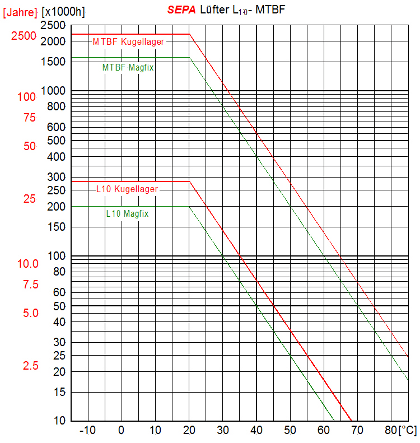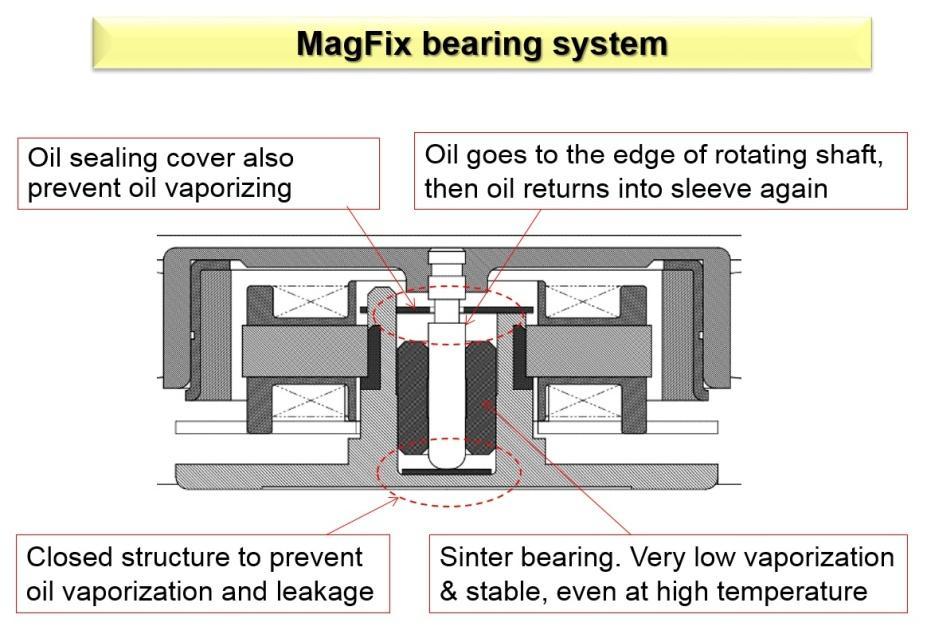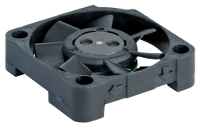Electronic cooling: QUALITY THAT PAYS OFF!
Technical Infos
Cooling management with modern compact fans
There is hardly any electromechanical product that has undergone such a multitude of positive changes on a broad front in recent years as the fan for electronics cooling. In addition to the improvement of the relevant data such high quality is offered that a fan does not represent a quality risk. Through the use of HG ball bearings or improved plain bearing systems (MagFix®), the service life probability of SEPA fans has again been significantly increased in recent years. The higher power density in modern electronic devices often requires sophisticated cooling management and thus the use of modern compact fans. For decades, SEPA EUROPE has been a pioneer and supplier of electronic cooling products of the highest quality. Through many years of experience, sophisticated techniques, selection of the highest quality components and strict quality controls and meet the high demands of today’s industry and fans are used worldwide.
The advantages of SEPA EUROPE’s long-life fans become especially apparent when considering the potentially very high repair costs of failures in the field: The failure of a fan during incoming inspection costs once the fan price, the failure of a fan during final equipment inspection can be estimated at about ten times the fan price, while the cost of a fan failure in the field increases to 100 times the price of a fan and more. In addition, there are possible costs for operational failure and replacement claims. Conclusion: Quality pays off!

The service life probability is very strongly dependent on the operating temperature. Following Arhenius’ law, the failure rate doubles (!) with a temperature increase of only 10K. At low temperatures, the viscosity of the lubricant sets a natural limit, which is why the figures are capped at 20°C and above. In order to give a practical indication of the typical service life, SEPA EUROPE gives these values at a temperature of 40°C, medium humidity and in continuous operation. How are these values to be understood?
Internationally, two specifications have become established that must not be confused: L10 and MTBF. L10 is the time after which 10% of the components have failed. MFBF (Mean Time Between Failures) is strictly speaking wrong, because the failure of a fan corresponds to a total failure (MTTF = Mean Time To Failure). Mathematically, the failure probability MTBF is 63.2%, i.e. after this time about 2/3 of the components have failed. The reciprocal of the MTBF is given in FIT (1 total failure in 109 hours) and describes the failure rate λ of technical components [ ].

According to ISO 281, SEPA EUROPE defines non-compliance with guaranteed data and not only total malfunction as failure. In addition to these basic specifications, in special cases (e.g. automotive application or medical technology) delivery quality or failures after a relatively short operating time in ppm (parts per million) or deviating standard specifications can be defined. Aggravated environmental conditions such as high exposure of the air to dust and aggressive chemical substances, high humidity, extreme temperature fluctuations or strong vibration reduce the probability of service life.
The service life of fans is determined by regular batch random testing. Since the actual survival probability L10 or MTBF is years or decades, exact recording is not possible. Therefore, the actual failure is regularly determined and converted in shorter periods, e.g. in L1, or at increased operating temperature. Since these are statistical parameters, they cannot be used to make any statement about individual components, but are always indicative of a larger series. Average values are also given for operating current consumption, rated speed and noise, but the starting current (or blocking current) is given as a maximum value. SEPA EUROPE also regularly audits manufacturing and quality assurance measures of all suppliers on site. In addition, each delivery received in-house is subjected to a strict spot check in our own laboratory before being released for distribution.
Quality and service life of fans is determined by the reliability and number of individual parts used. Older AC fans have a simple design and do not contain any electronics. The disadvantage is the high power consumption, which causes the temperature inside the fan to rise sharply. Modern AC wide-range fans and DC fans are electronically commutated and contain control electronics. The number of components used there has been more than halved in recent years through the use of special, highly integrated ICs. Lubricants and bearing design have been improved so that the operating temperature range, including for plain bearing systems (MagFix®), typically extends to +80°C. Special designs up to -40° … +90°C are feasible.

Very great progress has been made in the miniaturization of fans. The desire for the lowest possible overall height has led to increasingly flat radial fans, or fans that can operate as axial or radial fans depending on the installation.

This makes it possible to cool even small and highly lossy components economically. Power is supplied to the fans via stranded wires, which are often not soldered directly but connected via plugs. Subsequently attached connectors pose a risk of failure, especially if an inexperienced harnessing company does not handle the fans according to instructions. Assembly already at the manufacturer’s factory or by certified specialist companies guarantees high quality. The engineers of SEPA EUROPE establish a connection between the wishes of the end customer and the technical possibilities of the factory and offer competent support for your development and device optimization.
The high reliability of modern fans from SEPA EUROPE allows universal use in all devices in which heat is to be dissipated. Since Arhenius’ law applies to all electronic components (risk component electrolytic capacitor!), the reliability of a device can be significantly improved, weight and dimensions reduced by using high quality fans. The low additional costs for the fan are more than compensated by the elimination of expensive passive heat sinks.








